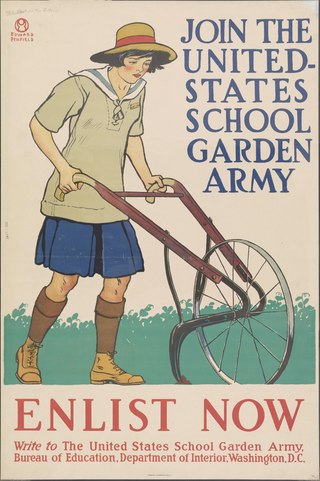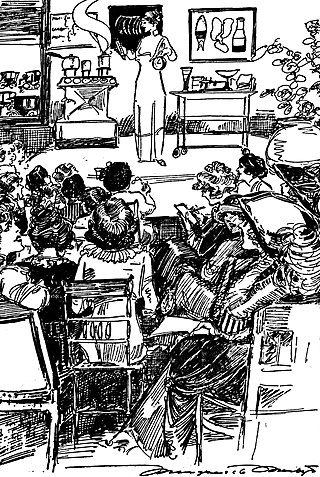Related Research Articles

The Morrill Land-Grant Acts are United States statutes that allowed for the creation of land-grant colleges in U.S. states using the proceeds from sales of federally owned land, often obtained from Native American tribes through treaty, cession, or seizure. The Morrill Act of 1862 was enacted during the American Civil War, and the Morrill Act of 1890 expanded this model.

A land-grant university is an institution of higher education in the United States designated by a state to receive the benefits of the Morrill Acts of 1862 and 1890.

Justin Smith Morrill was an American politician and entrepreneur who represented Vermont in the United States House of Representatives (1855–1867) and United States Senate (1867–1898). He is most widely remembered for the Morrill Land-Grant Acts that provided federal funding for establishing many of the United States' public colleges and universities. Originally a Whig, after that party became defunct Morrill was one of the founders of the Republican Party.

Walter Franklin George was an American politician from the state of Georgia. He was a longtime Democratic United States Senator from 1922 to 1957 and was President pro tempore of the United States Senate from 1955 to 1957.

The New Freedom was Woodrow Wilson's campaign platform in the 1912 presidential election, and also refers to the progressive programs enacted by Wilson during his time as president. First expressed in his campaign speeches and promises, Wilson later wrote a 1913 book of the same name. After the 1918 midterm elections, Republicans took control of Congress and were mostly hostile to the New Freedom. As president, Wilson focused on various types of reform, such as the following:
- Tariff reform: This came through the passage of the Underwood Tariff Act of 1913, which lowered tariffs for the first time since 1857 and went against the protectionist lobby.
- Labor reform: This was achieved through measures such as the Eight Hour Law for Women of the District of Columbia, the Seaman’s Act, Workmen’s Compensation for Federal employees, the Federal Child Labor Bill, and the Adamson Act. During the 1912 campaign Wilson spoke in support of workers organizing into unions while endorsing "the betterment of men in this occupation and the other, the protection of women, the shielding of children, the bringing about of social justice.”
- Business reform: This was established through the passage of the Federal Trade Commission Act of 1914, which established the Federal Trade Commission to investigate and halt unfair and illegal business practices by issuing "cease and desist" orders, and the Clayton Antitrust Act.
- Agricultural reform: This was achieved through measures such as the Cotton Futures and Smith-Lever Acts of 1914, the Grain Standards and Warehouse Acts of 1916, and the Smith-Hughes Act of 1917.
- Banking reform: This came in 1913 through the creation of the Federal Reserve System and in 1916 through the passage of the Federal Farm Loan Act, which set up Farm Loan Banks to support farmers.

The 65th United States Congress was a meeting of the legislative branch of the United States federal government, composed of the United States Senate and the United States House of Representatives. It met in Washington, D.C., from March 4, 1917, to March 4, 1919, during the fifth and sixth years of Woodrow Wilson's presidency. The apportionment of seats in this House of Representatives was based on the 1910 United States census.

The 37th United States Congress was a meeting of the legislative branch of the United States federal government, consisting of the United States Senate and the United States House of Representatives. It met in Washington, D.C., from March 4, 1861, to March 4, 1863, during the first two years of Abraham Lincoln's presidency. The apportionment of seats in the House of Representatives was based on the 1850 United States census.

The Alaska Statehood Act was introduced by Delegate E.L. Bob Bartlett and signed by President Dwight D. Eisenhower on July 7, 1958. As a result, Alaska became the 49th U.S. state on January 3, 1959. The law was the culmination of a multi-decade effort by many prominent Alaskans, including Bartlett, Ernest Gruening, Bill Egan, Bob Atwood, and Ted Stevens.
The history of Michigan State University dates back to 1855, when the Michigan Legislature established the Agricultural College of the State of Michigan under the encouragement of the Michigan State Agricultural Society and the Michigan Farmer, the state's leading agricultural periodical. As the first agricultural college in the United States, the school served as a model for other institutions of its kind established in the period, to give an instance, the Agricultural College of Pennsylvania.

The Office of Education, at times known as the Department of Education and the Bureau of Education, was a small unit in the Federal Government of the United States within the U.S. Department of the Interior from 1867 to 1972. It is now separated into and succeeded by the United States Department of Education and the Department of Health and Human Services.
The Smith–Hughes National Vocational Education Act of 1917 was an act of the United States Congress that promoted vocational education in "agriculture, trades and industry, and homemaking," and provided federal funds for this purpose. As such, it is the basis both for the promotion of vocational education, and for its isolation from the rest of the curriculum in most school settings. The act is an expansion and modification of the 1914 Smith–Lever Act and both were based largely on a report and recommendation from Charles Allen Prosser's Report of the National Commission on Aid to Vocational Education. Woodlawn High School became the first public secondary school in the United States to offer agricultural education classes under the Smith–Hughes Act. Of all the vocational subjects mentioned, home economics is the only vocational subject that the act recognized for girls.
The Rehabilitation Services Administration (RSA) is a federal agency under the United States Department of Education, Office of Special Education and Rehabilitative Services, and is headquartered within the Department of Education in Washington, D.C. It was established to administer portions of the Rehabilitation Act of 1973. Its mission is to provide leadership and resources to assist state and other agencies in providing vocational rehabilitation (VR) and other services to individuals with disabilities to maximize their employment, independence and integration into the community and the competitive labor market.

Vocational education in the United States varies from state to state. Vocational schools are post-secondary schools that teach the skills necessary to help students acquire jobs in specific industries. The majority of postsecondary career education is provided by proprietary (privately-owned) career institutions. About 30 percent of all credentials in teaching are provided by two-year community colleges, which also offer courses transferable to four-year universities. Other programs are offered through military teaching or government-operated adult education centers.
Education, once solely a state and local issue, now sees significant amounts of oversight and funding on the elementary and secondary levels from the federal government. This trend started slowly in the Civil War era, but increased precipitously during and following World War II, and has continued to the present day.

Abraham Lincoln Tower & Justin S. Morrill Tower, also known as The Towers, Morrill Tower or Lincoln Tower are two undergraduate residential houses at The Ohio State University. The Towers are located on the Ohio State University across from the east banks of the Olentangy River. The towers are on Cannon Drive in close proximity of the Ohio Stadium, RPAC, and the Wexner Medical Center.

New Jersey Hall is a historic education building located on the campus of Rutgers University in New Brunswick, New Jersey. Built in 1889 under the leadership of President Merrill Edward Gates, it housed the Agricultural Experiment Station.

Morrill Hall is a campus building of the University of Vermont (UVM), which is located on the southeast corner of the "University Green" in Burlington, Vermont. The building was named after U.S. Senator, Justin Smith Morrill who authored the Morrill Land-Grant Acts of 1862 and 1890, which created the American Land-Grant universities and colleges. Senator Morrill also served as a trustee of the university from 1865 until 1898. The building was constructed during 1906–07 to serve as the home of the UVM Agriculture Department and the Agricultural Experiment Station. It was added to National Register of Historic Places as part of University Green Historic District on April 14, 1975. As of 2015, the building continues to house the College of Agriculture and Life Sciences and the UVM Agricultural Extension Service.
Alvin Earl Dodd was an American consulting engineer and president of the American Management Association, known as industry expert and recipient of the Henry Laurence Gantt Medal in 1944
The federal government of the United States has limited authority to act on education, and education policy serves to support the education systems of state and local governments through funding and regulation of elementary, secondary, and post-secondary education. The Department of Education serves as the primary government organization responsible for enacting federal education policy in the United States.
References
- 1 2 "Our Documents - Morrill Act (1862)". www.ourdocuments.gov. Retrieved 2019-04-25.
- 1 2 3 4 5 William Stull Holt. The Federal board for vocational education: its history, activities and ... University of California. D. Appleton and company, 1922.
- ↑ "Smith-Hughes Act | United States [1917]". Encyclopedia Britannica. Retrieved 2019-04-25.
- 1 2 Mobley, M. D. (1964). "A Review of Federal Vocational-Education Legislation 1862-1963". Theory into Practice. 3 (5): 167–170. doi:10.1080/00405846409541920. ISSN 0040-5841. JSTOR 1475196.
- ↑ Hillison, John (1995). "The Coalition that Supported the Smith-Hughes Act or a Case for Strange Bedfellows" (PDF). Virginia Tech.
- ↑ Hillison, John; Moore, Gary (1993). "The Federal Board for Vocational Education: Its Composition, Controversies, and Contributions". Journal of Vocational and Technical Education. 10 (1): 21–29. ISSN 0010-3829.